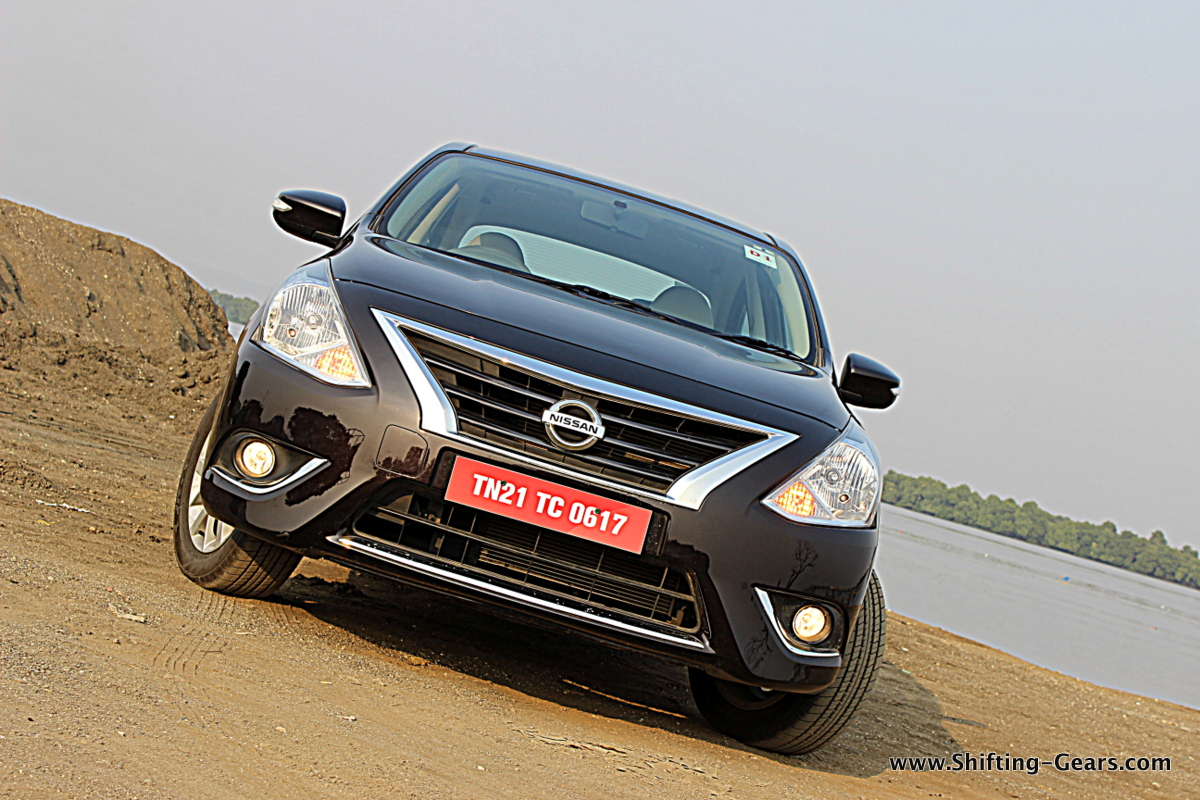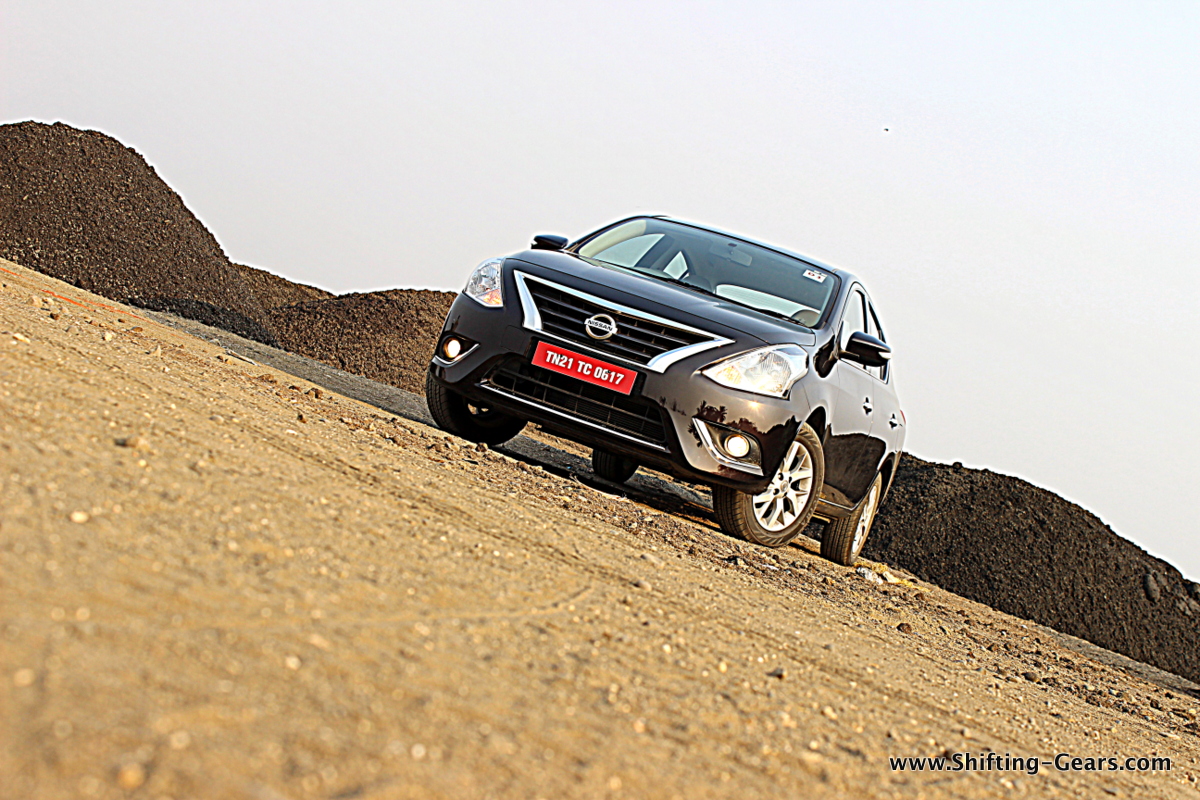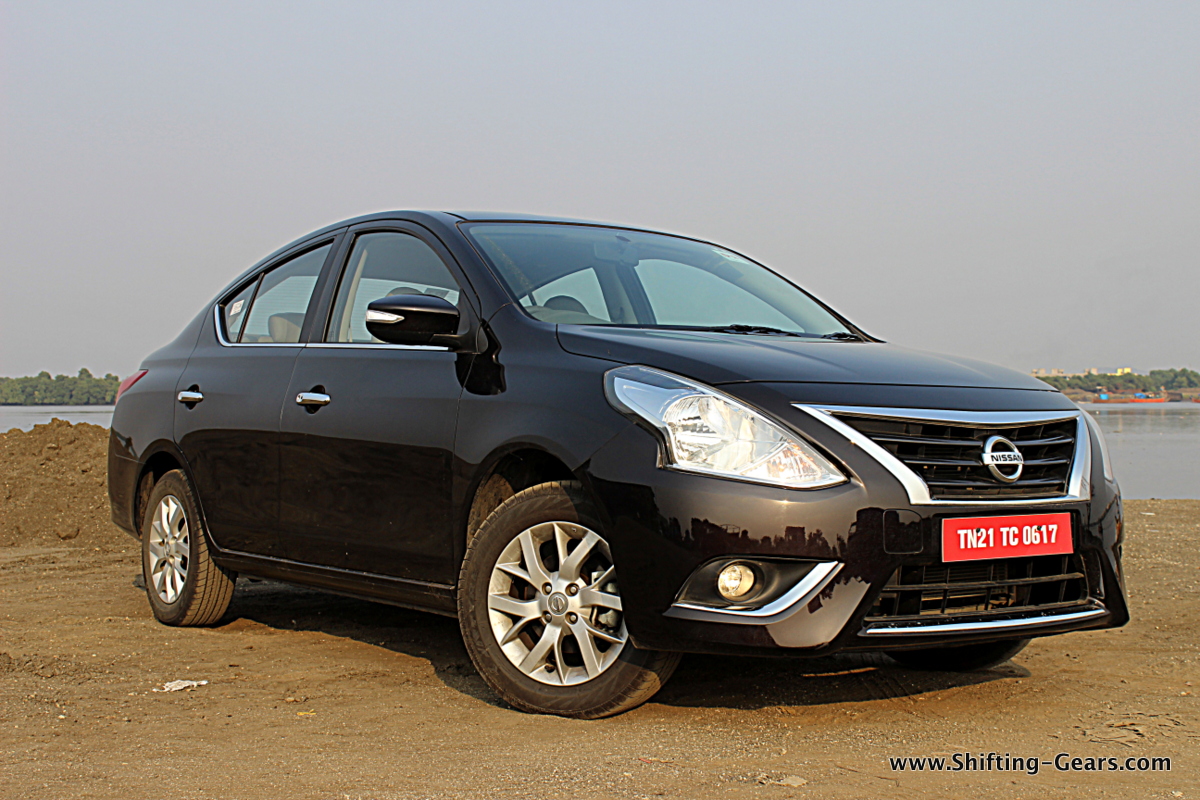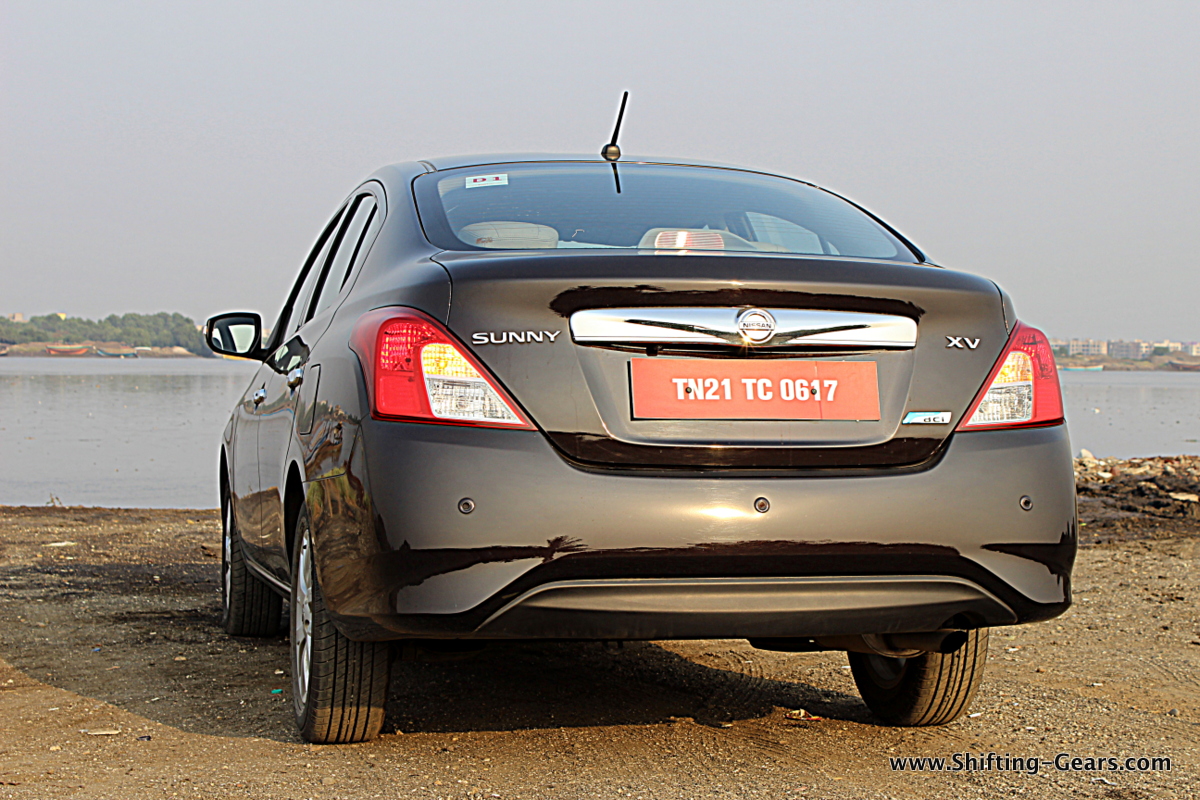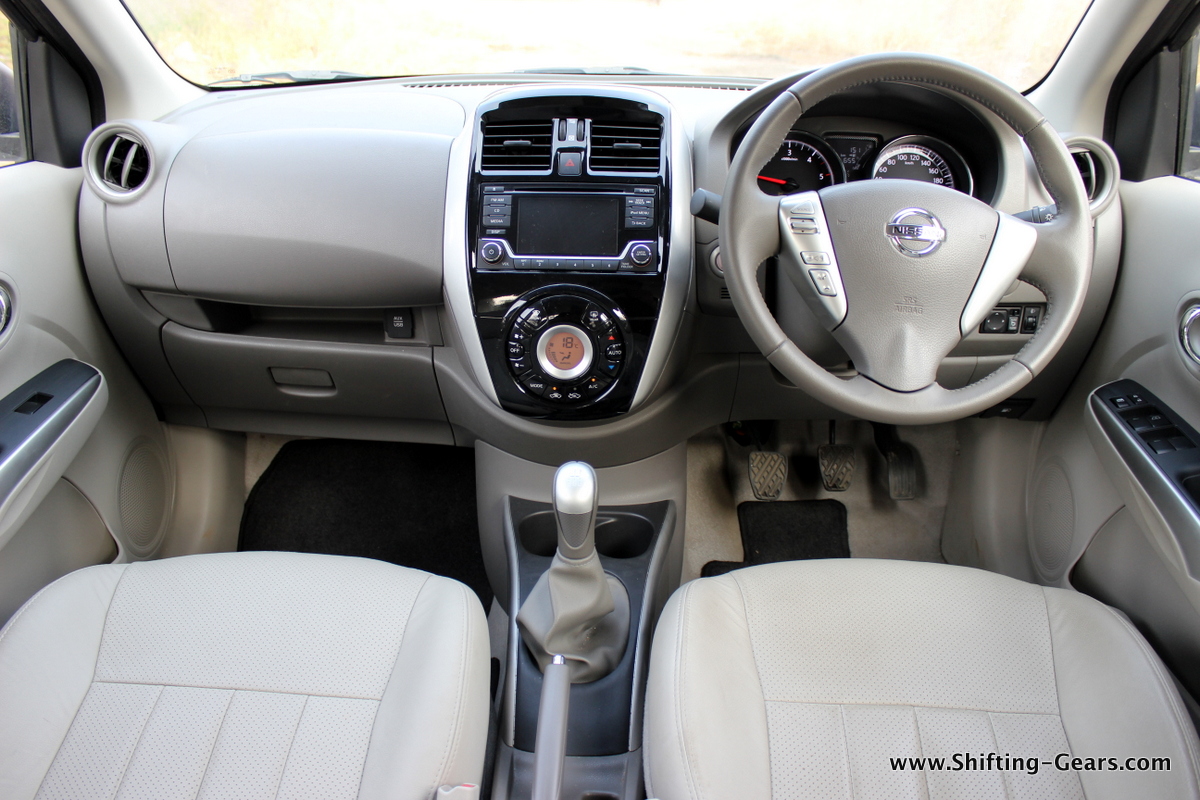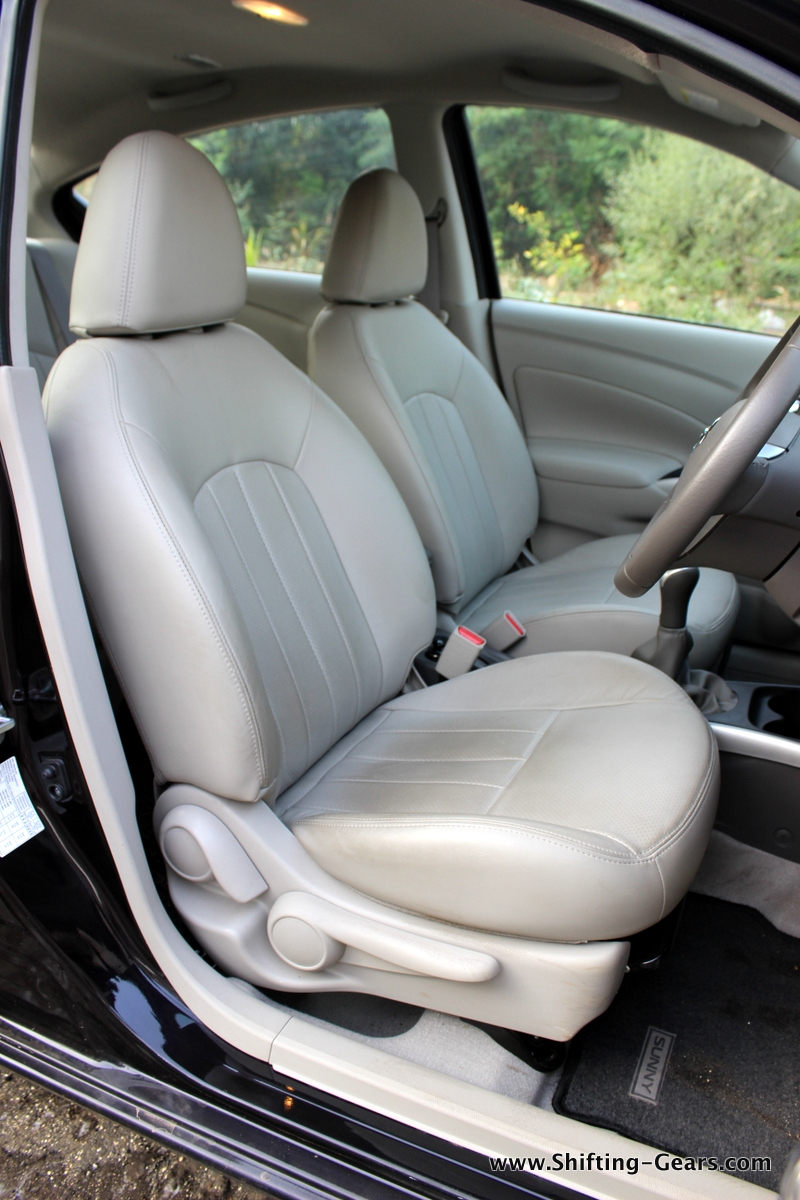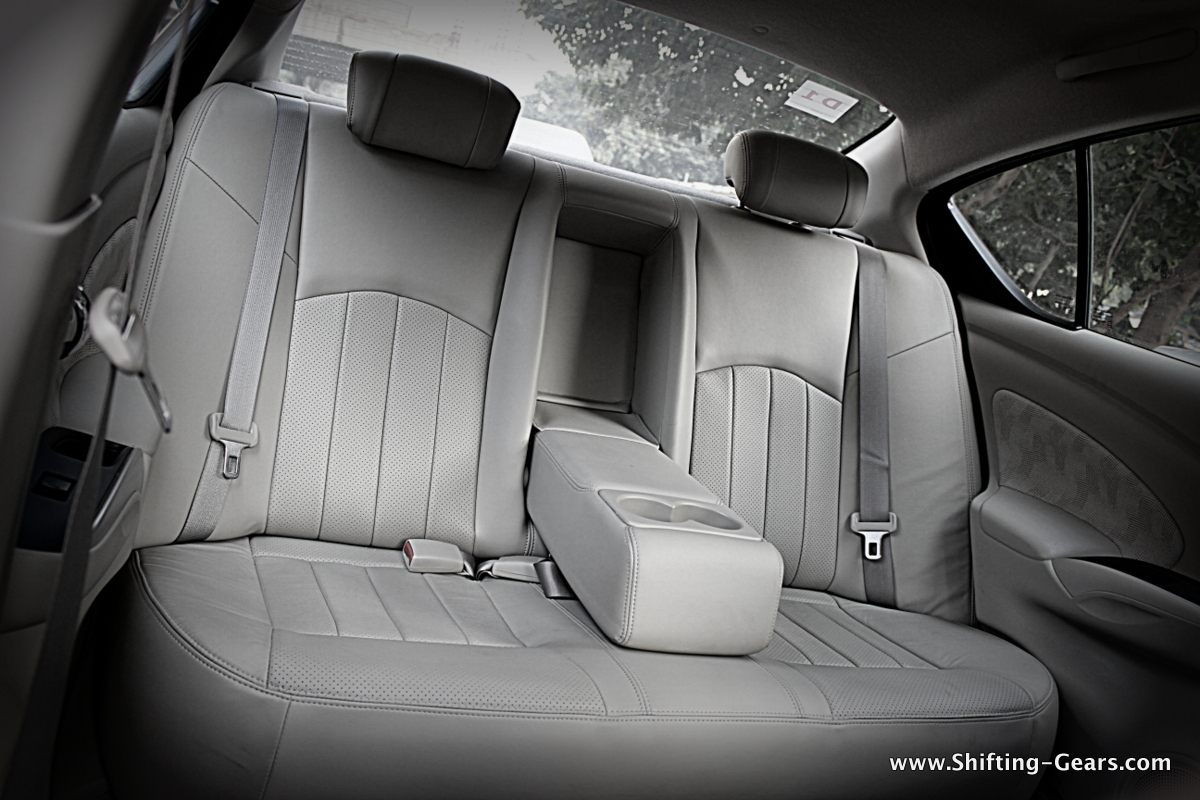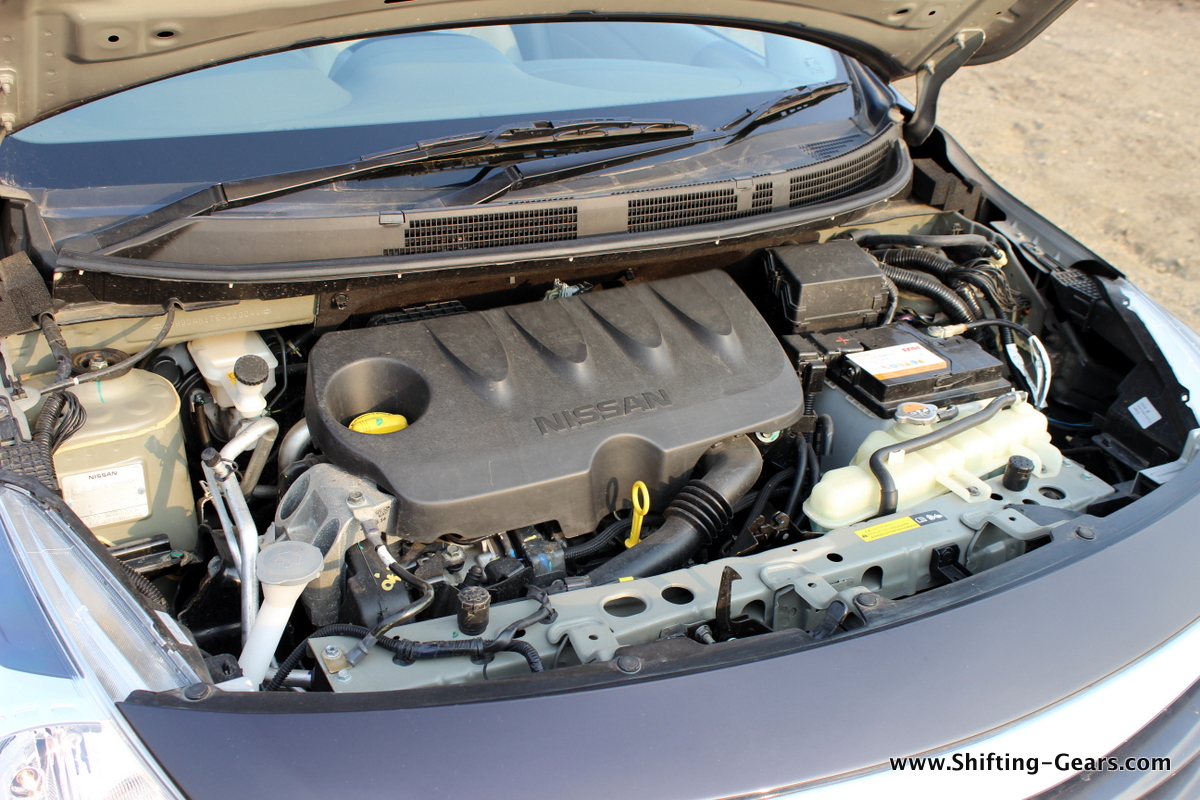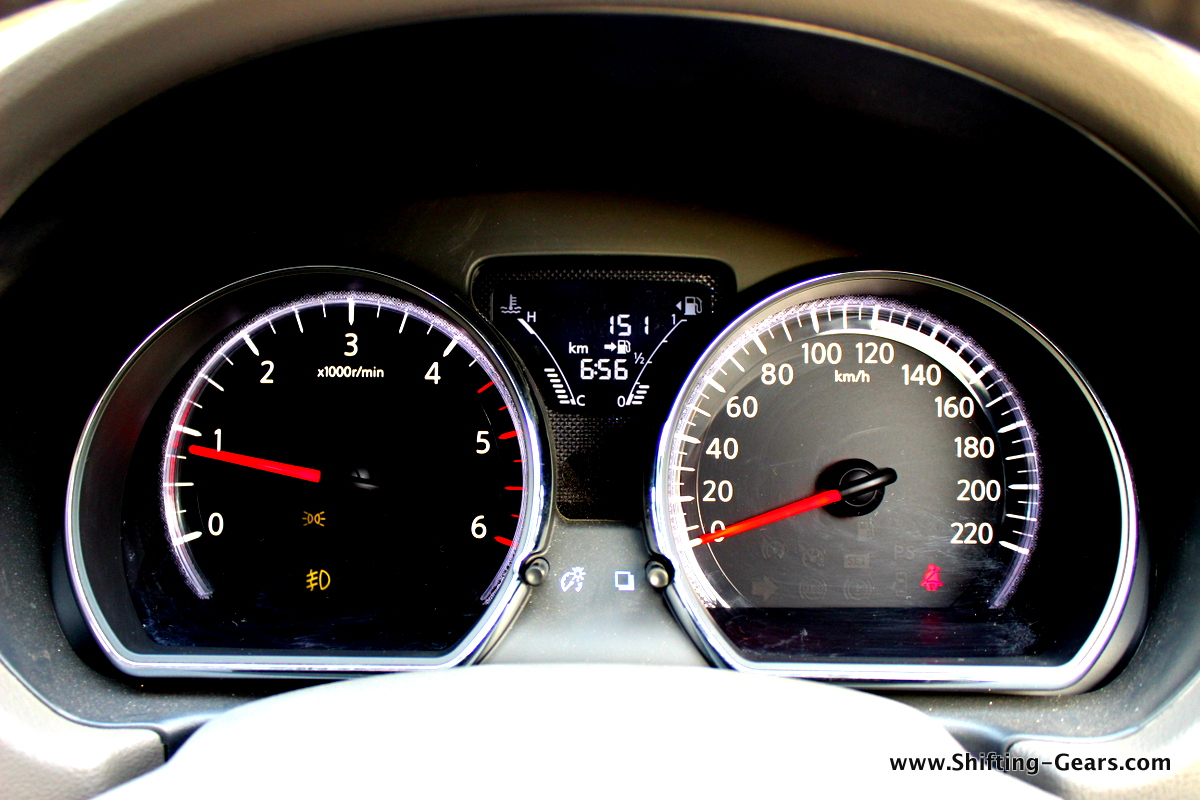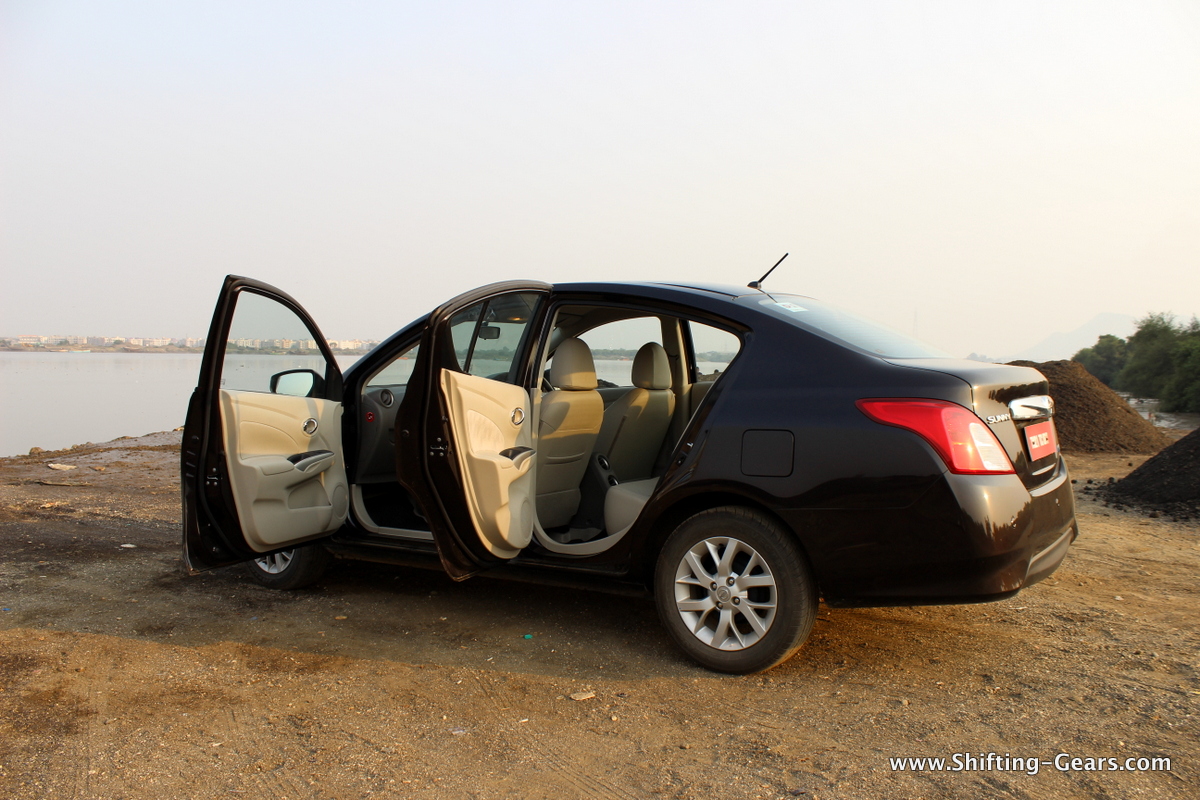Nissan Motor India Pvt Ltd (NMIPL) is a wholly owned subsidiary of Nissan Motor Co. Ltd Japan. The company was incorporated in 2005 and as of date has a portfolio of two brands, Nissan and Datsun. In February 2008, Nissan, together with its global alliance partner Renault signed a MoU with Government of Tamil Nadu to set up a manufacturing plant at Oragadam, near Chennai with an investment of INR 45 billion over a period of 7 years. On 17 March 2010, the Renault-Nissan alliance plant was inaugurated in a record time of 21 months since its ground breaking ceremony in June 2008.
As of October 2014, Nissan has a market share of 1.27% in the Indian auto sector. Currently, Nissan has a product portfolio of 4 cars including the Micra, Sunny, Evalia and Terrano. Sighting poor sales, the company has discontinued the Teana, X-Trail and 370Z from the Indian market. The ‘CAAAAR’ as Nissan likes to call the Sunny, hasn’t been quite a success story from day 1. Yes, it offers the best-in-class cabin space, at least at the rear and comes with frugal engines. Still, the Sunny has managed to sell at an average of 507 units over the past 6 months. Satisfactory number? We guess not. The Sunny was Nissan’s first C-segment sedan and the company got almost everything right straight from the engine to fuel efficiency numbers to cabin space etc. But the choice of having an agency sitting on top of the dealer network made things worse. Now with Hover out of the picture, Nissan is trying to keep both, dealers and customers happy. This is the 10th generation model of the Sunny and is based on Nissan’s ‘V’ platform which also underpins the Micra. Nissan wanted to launch the Sunny in India with a Versa brand name but couldn’t because that name belongs to Maruti here in India.
We got behind the wheel of the 2014 Nissan Sunny facelift. This is what we found out…
Exteriors:
Right from the day of launch, which was in 2011, the Nissan Sunny was not really a handsome looking automobile. It looked quirky and was more about function over form. Styling was heavily inspired from the bigger Teana, which by itself was no style icon. The overall size of the car however is very noticeable, longer than most of its rivals. The boot integration on the Sunny was always average looking and it cannot be compared to the likes of say a Hyundai Verna or Honda City. But back then, it was surely better looking than the Swift Dzire. The Sunny facelift came at a time when Honda with the City regained its lost dominance in the C segment sedans, and it continues to do so month-on-month.
The Sunny measures 4,455mm in length, 1,695mm in width, 1,515mm in height and has a wheelbase of 2,600mm. The Sunny has a generous ground clearance of 161mm. 14″ wheels however look small for a car of this size and do not fill the wheel well completely either.
At the front, the Sunny facelift gets a wider grille with chrome surrounds. The grille is now sharper than it was previously and nearly reaches out to the headlamps. Below the front air dam, you get another chrome strip which accentuates the width of the car. Front bumper design has also been revised on the facelift. Fog lamp housing is also new and you get another chrome insert over here. Headlamps have been redesigned from the bulbous looking units to a larger, sweptback unit. They still remain a single pot unit with turn indicators at the bottom. The bonnet sheet metal remains identical with the subtle crease lines. The bonnet shut line is still on the wider side, as it was even on the pre-facelift one.
Side profile of the car gets only a couple of changes. The alloy wheels have been changed to a Y-shape, multi-spoke design and the Sunny facelift also gets a chrome weather strip. ORVMs now get integrated turn indicators and the front fender mounted turn indicator has now been removed. The car continues with a blackened B-pillar and chrome door handles, with a request sensor for true keyless entry on the front doors. The roof mounted antenna also has been moved from the front to the back, and is now a shorter unit. There are absolutely no sheet metal changes on the side profile of the Sunny facelift.
At the back, the Sunny facelift features the same set of tail lamps which were seen on the pre-facelift model. The redesigned rear bumper now gets a blacked out lower section to break the monotony. Body coloured number plate garnish has been replaced by a chrome unit on the facelift. Another addition at the back are the reverse parking sensors and camera, which give you an audible and visible feedback.
Overall, the facelift model is just about addition of chrome all-around. The cosmetic changes do not add too much flare, but only bling. Amongst competition like the City, Verna, Rapid, Vento, Fiesta etc., the Sunny looks dated even with this excess chrome. The car needs an extensive makeover if it wants to sell on the style quotient. Because clearly, with all the value it offers, nobody has really taken notice in all these years.
Interior:
Similar to what is the case on the outside, likewise on the inside. Dashboard is identical to the pre-facelift model, which is identical to the Micra in many ways. For the segment in which it slots in, things expected are way above what Nissan has to offer here. Yes, feature list could reveal similar equipment, but then, things are not very pleasing to the eye.
Things haven’t changed dramatically on the facelift Sunny, but the changes are welcome. The Sunny now gets a premium looking 3-spoke steering wheel wrapped in leather with silver accents. Audio and telephone controls mounted on the left are easily accessible too. The dashboard design hasn’t changed, but the centre console is now seen in piano black with silver accents on either side. If you look closely, the centre console has changed a bit. It now wraps around the AC controls completely as opposed to ending on top of the AC controls. Interior colour scheme remains on the lighter side with grey and beige making the cabin feel bright and airy at all times.
Instrument cluster remains the same twin-pot unit with chrome dials. The MID backlit however has changed from red to white which looks classy now. MID displays time, instantaneous fuel efficiency, average fuel efficiency, DTE, trip meter and odometer. The intensity of the backlit can be adjusted to suit ones taste. Other switches and plastics used around the front end is very average, and does not feel like it would last for a very long time. For example, the power window switches which operate in a rather clicky manner. Gear stick now gets a silver insert on top and looks better than the previous unit.
Stereo head unit has now been changed with a 5.1″ touchscreen unit which also serves as a screen for the reversing camera. Sound quality from the head unit is much better than before and the sound output should keep everyone happy. Aux and USB inputs are mounted above the glovebox, in the small storage bin. AC controls remain the same in a circular layout. The automatic climate control performance is adequate and on a November afternoon, the car managed to keep us cool at low blower speeds. Circular AC vents on either side can be shut completely.
Nissan now offers leather upholstery on the Sunny for the top end variants. Get inside the Sunny and this is where the car excels. There is just ample room or everyone. Both taller and shorter drivers will be very happy inside the Sunny. Seats are comfortable and provide reasonable support throughout. Lateral support although not best in class, was still adequate and may be better than a few others. With the facelift, Nissan has missed yet another opportunity to add the front driver armrest. Features like these come in very handy and the customers do need it in today’s date. Driver footwell has enough space and gets a dead pedal as well, in the form of a moulded floor. Ergonomically, the Sunny is decent and a new occupant can get comfortable within minutes.
Jump into the rear seats and you’ll know what class leading space is all about. Legroom is enormous and the Sunny stands unbeaten in this race. Forget 6 feet, even a 7 foot rear passenger would be comfortable with the available legroom at the back, given the driver is short though. Accommodating 3 on the backseat of the Nissan Sunny is no problem at all. The floor hump is also on the minimum side and the 5th occupant will have enough room to rest his feet. Rear seats recline at a very comfortable angle and the Sunny will keep the chauffeur driven owners very happy. Well bolstered seats provide good lateral support as well when the driver is in an enthusiastic mood. For the rear passengers, only 2 cupholders are available in the centre armrest. Addition for the rear passengers include individual reading lamps on the roof apart from a rear cabin lamp.
To keep things cool at the back, Nissan offers a blower between the front seats. With 2 adjustable vents, this is merely a fan / blower and not an AC unit. It simply sucks the air from the front cabin and blows it on the rear passengers. Speed 1 is very effective in blowing air and keeping things pleasant at the back. Speed 2 however is horribly noisy and you won’t bear this for too long.
490 litres of bootspace is good enough to suck in your long holiday luggage easily. The boot can be opened with the button on the keyfob with a long press. The boot opens wide and also has a low loading bay which makes things easy. The rear seats however do not fold down for times when you need more carrying capacity.
Engine, performance and handling:
The Nissan Sunny is offered in India with 1.5L diesel and petrol motors mated to 5-speed manual gearboxes. The petrol engined Sunny also gets a CVT gearbox. While we have driven all of these poweplants before, we chose to drive only the diesel model of the Sunny facelify, purely because the diesel models are still more popular compared to petrol and the 1.5L dCi available on the Sunny is one of the most tractable motors available on sale here in India.
The Sunny is powered by a 1.5L, K9K, dCi, 4-cylinder, diesel motor which produces 85 BHP of power @ 3,750 RPM and 200 Nm of torque @ 2,000 RPM mated to a 5-speed manual gearbox. Fire up the engine and there is not too much of the diesel clatter audible inside. NVH levels are well maintained.
Slot it in first, and the car drives like a NA (naturally aspirated) motor. There is no turbo lag felt at all and the car can crawl at low speeds without having to downshift often. City driveability is very good and the 2nd and 3rd gear are more than enough to handle almost everything. Even the power delivery is very linear and there is no turbo spool felt, like in the Dzire. The engine is very tractable and one can start off from 0 kph even in the 2nd gear. If you’re in second, there is no need to shift to first while encountering speed breakers, just slow down, and then press the pedal – no nonsense at all. This engine has proved itself as a very reliable motor over these years. One look at the odometer reading of a Logan cab will give you the answer. Cars have run well over 2 lakh km and the engine still doesn’t show any significant signs of ageing.
Gearshift quality is rubbery and doesn’t slot in perfectly. Gear gates are not that well defined and at times, you’ll find yourself pushing hard to slot into the right gear. Steering wheel and clutch are light and city commuting is not a problem in the Sunny.
On the highway, the old-school behaviour is very evident. Driving pedal-to-the-metal is not a style suited for the Sunny. The engine is coarse on high RPMs and there isn’t too much of a progress by staying that high in the revv band either. Upshifting early, say around 2,500-3,000 RPM is a sensible option because the engine is very audible inside the cabin above that. Mid-range performance of the Sunny is acceptable by segment standards. At cruising speeds of about 100 kmph, the diesel engine is very quiet.
Nissan claims to have tweaked the ECU of the Sunny diesel and the car now delivers 1 kmpl more compared to the pre-facelift model (ARAI). On the highways, at cruising speeds, the car can deliver upto 20 kmpl easily, with a light foot though. In the city, the Sunny delivered a respectable 14 kmpl.
Driving dynamics of the Sunny are predictable but not spot on. The long wheelbase adds to a noticeable body roll when cornering. Handling isn’t very confidence inspiring and the car doesn’t feel very planted on high speeds. This is because the suspension is tuned softer for rear seat comfort in the city, and not for high speed runs. Still, there is not too much of a vertical movement felt at the back when moving over undulated roads on high speeds. Softly sprung suspension soaks up the potholes well, without unsettling the passengers. The problem with the not-so planted feel is the light weight of the car. Steering wheel also doesn’t weigh up adequately on the highway and one needs to have a firm hand when doing triple digit speeds. Understeer is also prominent while cornering, but then, the Sunny isn’t meant to be driven that way.
Ride and handling are more suited to play a role for the family sedan than for a young and enthusiastic driver. Braking performance is slightly poor compared to competition. Brake bite initially is lacking and the pedal feels very spongy.
If you want a reliable car for your family and want more space than you might actually need, the Sunny offers just that. Also, if you are driven around by your driver for long distances throughout the day, the frugal diesel motor and the back seat comfort in unmatched by any competitor in the segment. Priced competitively, even though the Sunny is not much of a looker, it delivers and checks almost all boxes of a potential buyer. If you prefer function over form, you will surely like what the Sunny has to offer.

